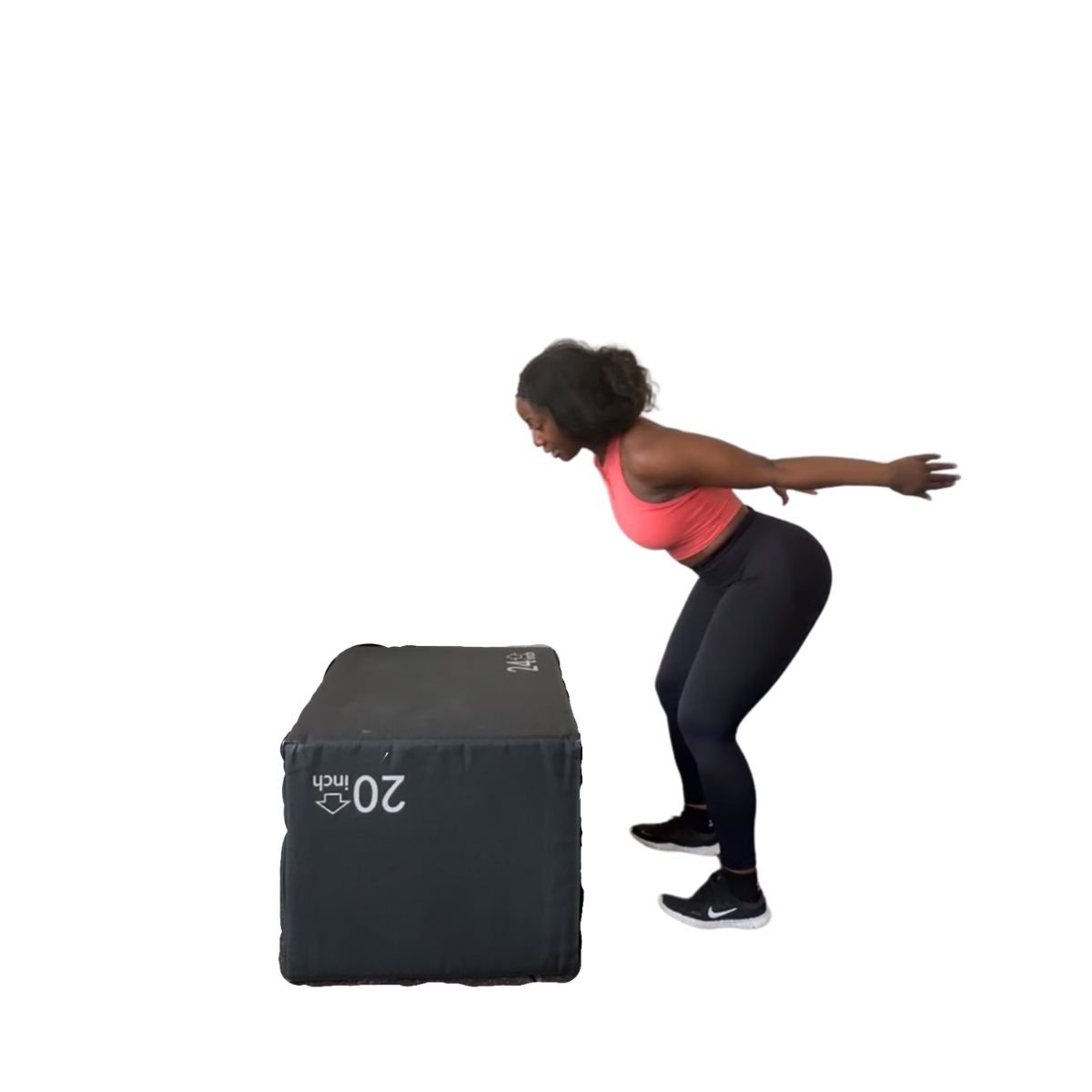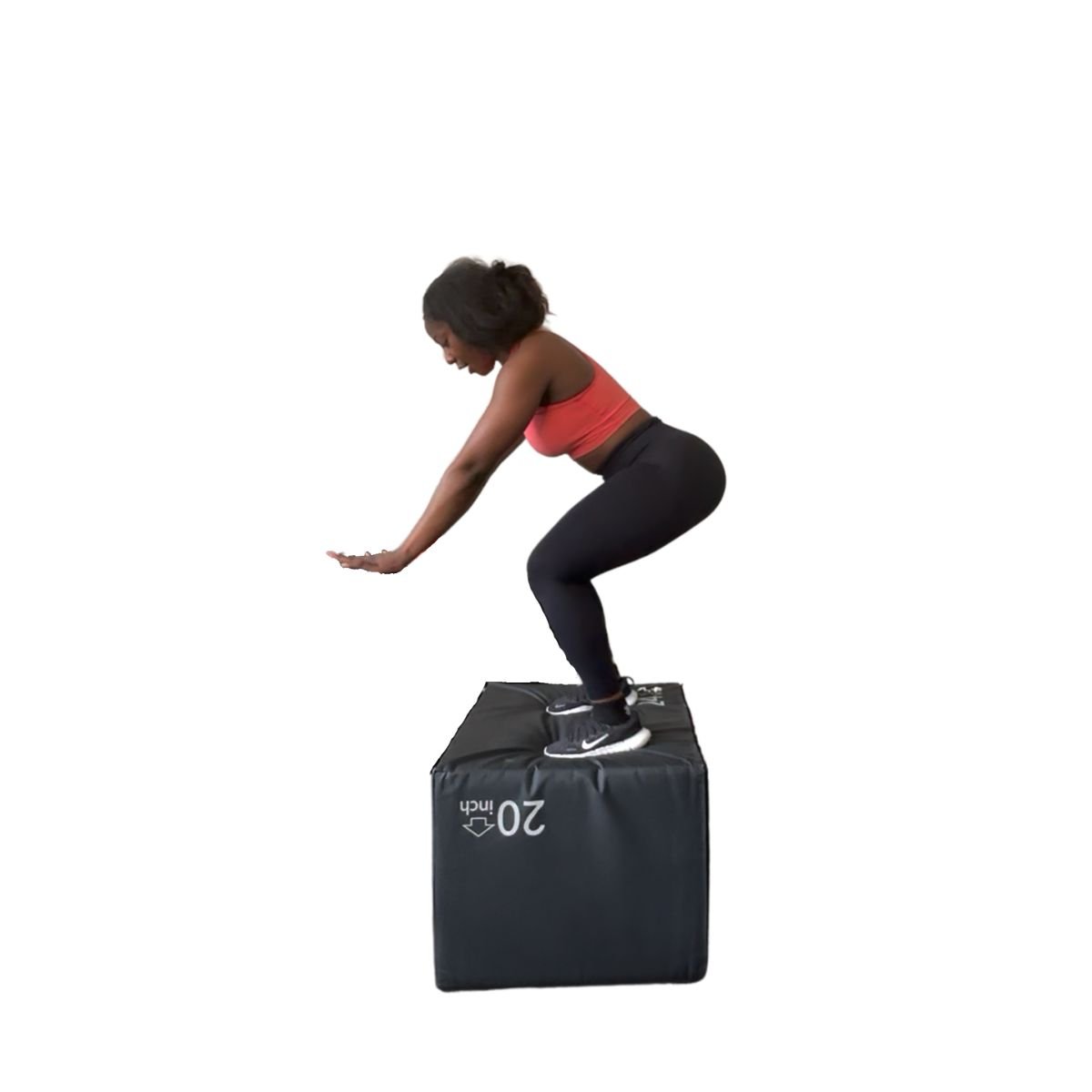Build Explosive Legs with Box Jumps
Table of Contents
What Are Box Jumps
Box jumps are a variation of the squat jump in which we slightly squat down and jump up onto a box. The box jump is a bodyweight exercise that aims to increase your lower body strength, power, and even your vertical jump height.
How to Do Box Jumps
Start by standing in front of the box (about 2 inches away) with your feet approximately hip-width apart.
Preparing for takeoff, slightly bend your knees and drive your hips back.
Use your arms to gain momentum as you extend your ankles, knees, and hips and jump up onto the box.
Land with both feet simultaneously on the box, in a similar position to your takeoff.
After landing, stand up tall by completing full hip and knee extension.
Jump or step down to begin the next rep.
Box Jump Form
Here are some things to keep in mind when doing Box Jumps:
Don't let your knees cave in as you land. Really drive those knees out to ensure they are in line with your toes.
As you land, make sure your upper back doesn't round forward. Be sure to maintain a neutral spine throughout the movement.
During landing, ensure your weight is over your midfoot. Avoid landing on your heels or toes.
Why Is the Box Jump Useful
The Box Jump is useful because it is a great lower body plyometric exercise that increases power, strength, and stability. If you jump a lot in your sport, this exercise is ideal as it enhances explosiveness and can improve your vertical jump.
Additionally, Box Jumps are beneficial for adding variety to your workouts since they are highly adaptable and offer different variations to try. For beginners, start with a smaller box and perform lower reps until you have mastered the mechanics and are landing properly with a solid base.
Once you have mastered the technique, you can progress by completing more repetitions and increasing the height of the box. For advanced individuals who seek further challenges, consider trying a higher box or performing a Box Jump variation.
Box Jumps Muscles Worked
Box Jumps Benefits
There are numerous benefits to performing Box Jumps. Some of these include:
Increased lower body strength and power.
Improved stability.
Ability to incorporate them into HIIT workouts or circuit training.
Enhanced muscular endurance and speed.
Increased rate of force production.
Box Jumps Workout
When incorporating box jumps into your workout routine, you need to remember to start with low repetitions, low sets, and long rest times. Why, you ask? The box jump is a plyometric exercise that is categorized as a high impact movement. Consequently, it puts additional stress on the bones, joints, muscles, and ligaments. To avoid any sort of injury or strain, as mentioned earlier, begin with low sets and reps and gradually increase them over time.
The workout can be made more or less challenging by adjusting the height of the box – higher boxes will require more strength and power, while lower boxes can be used for beginners or those looking to focus on speed and agility.
Different Types of Boxes Available for Box Jumps
Various types of boxes are available for box jumps, including:
Wooden Box Jumps
These are the original boxes created for box jump exercises. They are stable and adjustable, but a drawback is that a misstep can lead to scrapes on the shins or knees.
Soft Box Jumps
Soft boxes are great for beginners, as they are designed to prevent injuries to shins and knees in the event of a mistake. However, as the box's height is increased, its balance becomes less reliable. It's important to ensure that the soft box can support your weight and maintain stability before jumping.
Weighted Box Jump
My personal favorite, the weighted box, combines the softness of the soft box with the solidity of the wooden one, offering adjustability as well.
Box Jump Variations
Double Leg Box Jump to Single Leg Landing
This exercise begins with a powerful jump from both feet, but the participant lands on just one leg on top of the box.
Single Leg Box Jump
Starting on one leg, the athlete explosively jumps onto the box, then lands on the same leg.
Single Leg Jump to Double Leg Landing
In this variation, the initial jump begins on one leg, but lands on both legs on top of the box, thereby focusing on the explosive strength of each leg, but with a more stable landing that can be easier for beginners.
Lateral Box Jumps
Rather than jumping straight onto the box, the athlete jumps sideways, working the lateral muscles of the legs and hips and increasing lateral power and agility.
Seated Box Jumps
Seated Box Jumps start with the participant seated on a bench or box, from which they explosively jump up onto a second, taller box.



